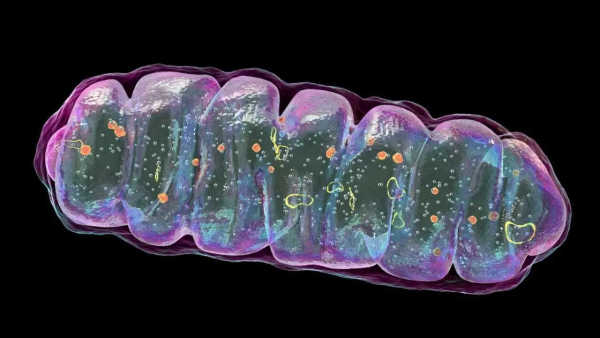Imagine a vibrant 8‑year‑old boy, once an avid runner and a spirited soccer player, confined to a wheelchair by a rare, fatal genetic disease that robbed him of his ability to walk.
Traditional CoQ10 supplements offered no relief when his condition rapidly worsened. Then a pioneering experimental drug – 4‑hydroxybenzoate (4‑HB) – designed to bypass his genetic deficiency, not only halted his decline but restored his mobility in just weeks. Within weeks of compassionate‑use treatment approved by the FDA at NYU Langone, he walked again – hiking, go-karting, and playing with renewed vigor.
This extraordinary case, the first human success for HPDL deficiency , signals a monumental shift in rare disease therapy, transforming despair into hope. It not only redefines treatment for HPDL deficiency but also shines a beacon of hope for rare mitochondrial diseases everywhere.
Read on to know more.
From an athlete to being wheelchair-bound : The onset of HPDL deficiency
In mid-2023, this otherwise healthy boy – a competitive runner and soccer enthusiast – started showing worrying signs: stumbling, ankle stiffness, and loss of coordination. He began experiencing involuntary muscle contractions in his ankles while playing soccer. Within months, these symptoms escalated; by November, he needed a wheelchair and struggled even to stand.
Genetic testing at NYU Langone revealed biallelic mutations in the HPDL gene, essential for producing coenzyme Q10 (CoQ10), a vital antioxidant for mitochondrial health.
HPDL deficiency disrupts the CoQ10 biosynthesis pathway, impairing cellular energy production. Without CoQ10, neurons and muscles lose function, leading to spasticity, paralysis, seizures, and often early death, with severe forms manifesting in infancy. In this child’s delayed-onset case, symptoms appeared later but progressed swiftly.
The CoQ10 conundrum: Why supplements aren’t enough
CoQ10 is widely available as a dietary supplement and is generally safe. However, CoQ10 supplements are completely ineffective in HPDL cases affecting the brain because CoQ10 molecules are too large and hydrophobic to cross the blood–brain barrier. Without reaching the brain, supplemental CoQ10 offered minimal benefit, essentially leaving the underlying condition unchecked. While CoQ10 supplements may help peripheral tissues, they leave neurological symptoms – spasticity, paralysis, and rapid degeneration – untreated.
A biochemical breakthrough: Smart ‘tailor-made’ solution
In 2021, researchers at NYU, led by Dr. Michael Pacold, discovered that HPDL catalyzes an early step in CoQ10 synthesis: converting 4‑hydroxy‑methyladenine (4‑HMA) to 4‑hydroxybenzoate (4‑HB), a precursor that is small and hydrophilic enough can cross the blood–brain barrier.
In HPDL-deficient mice, oral 4‑HB restored CoQ10 production, significantly improved neurological function, and rescued 90% of subjects when administered early. Translating this from mice to humans presented risks, but given the rapid deterioration and the absence of other options, the child's parents and medical team pursued a compassionate-use approval from the FDA.

Compassionate use in humans: Life-changing progress
By November 2023, with the boy’s condition worsening and time running out, NYU’s team – led by Dr. Claire Miller – obtained FDA approval for single-patient investigational use of 4‑HB.
The treatment began in December 2023.
In July 2024, the boy began daily oral doses of 4‑HB dissolved in water. Initial mood and side effects varied – he experienced nausea occasionally – but the potential benefits were undeniable. Remarkably, within just a month, he regained the ability to walk and walked more than half a mile in Central Park. His progress was profound. Over the next year, he completed a four‑mile hike and even enjoyed go-karting – all without serious side effects.
Doctors report a significant restoration of motor function and stamina. The boy can complete his daily activities without assistance—though rigorous sports remain off-limits. There have been no severe side effects reported so far.
Impact and perspective: A medical breakthrough
This case represents the first successful application of 4‑HB therapy in a human with HPDL deficiency. Classified by experts as a "bench-to-bedside" success, it demonstrates how basic biological insights – like metabolic pathways – can be translated into transformative therapies.
Pacold highlighted the value of NIH-funded foundational research: without it, 4‑HB’s pathway to human use wouldn’t exist. However, experts emphasize that while the results are unprecedented, caution remains essential.
One patient’s outcome isn’t enough to define safety or efficacy broadly. Nevertheless, the experimental treatment offers proof-of-principle and has prompted plans for larger clinical trials across ages and HPDL variants.
Broader implications for rare disease care
This case highlights the potential of precision, mechanism-based therapies for ultra-rare genetic disorders – many of which lack approved treatments due to their complexity and small patient populations. It also illustrates how compassionate-use pathways can bridge the gap between preclinical research and patient care.
For HPDL deficiency, this success sets the stage for larger clinical trials. Researchers are now exploring the treatment’s wider applicability and grappling with whether 4‑HB acts solely by restoring CoQ10 or if other mechanisms are at play.
A beacon of hope for rare disease communities
Rare genetic disorders often lack effective therapies due to low patient numbers and complex biology. This milestone highlights how customized, mechanism-based interventions can break new ground. It reiterates the importance of NIH-funded basic science – Pacold’s pathway elucidation stemmed from foundational grants.
Dr. Miller reflected on how “movement is identity and personality,” and described the turnaround as “heartwarming.” As the boy himself reportedly asked, "When are you going to make this a pill?" – a reminder of evolving patient-driven optimism.
Looking ahead
What’s ahead now? Next steps focus on clinical expansion: enrolling more pediatric patients, refining dosing, and assessing long-term outcomes. Scientists also aim to clarify whether 4‑HB works solely by boosting CoQ10 or also via unexpected mechanisms. Additionally, assessing whether similar treatments can address broader CoQ10 deficiencies is a promising, yet cautious, discussion.
Contact to : xlf550402@gmail.com
Copyright © boyuanhulian 2020 - 2023. All Right Reserved.